Please Note: This post may contain affiliate links. If you click one of them, we may receive a commission at no extra cost to you. As an Amazon Associate, I earn from qualifying purchases.
Top Takeaways and Key Concepts
- Stay calm and assess your surroundings before making any decisions in a survival situation.
- Locate and purify water first to prevent dehydration and stay alert.
- Forage safe food sources like edible plants, berries, and insects for energy.
- Build simple shelter using branches and leaves to stay warm and protected.
- Signal for rescue creatively using reflective objects, ground messages, or noise.
Summary of This Article
This article teaches how to survive in the wilderness using mindset, resourcefulness, and humor. It explains the importance of staying calm, finding drinkable water, and foraging simple food like berries or insects. It also emphasizes building shelter from natural materials and signaling for help using creative methods like reflective items or ground messages. Most importantly, it encourages a positive attitude and problem-solving approach to turn a scary situation into an empowering survival story.
Short Video Version of this Article
Picture this: you’re in the woods and all around you are trees that appear like they belong in a scary movie. It’s quiet, maybe too quiet. You have no food, no water, and only one friend? A hyperactive squirrel trying to eat your shoelaces. Wow, right?
But don’t worry! You can turn this into a humorous adventure with a little bit of ingenuity and quick thinking. “Survivor: The Squirrel Chronicles” is what you should picture. Sounds like a great show, doesn’t it? You might be the main character!

First, take a look around you. Find plants or berries that you can eat. You could locate something safe to eat. If you keep your spirits up, being a little hungry won’t hurt.
Next, think about the water. Is there a creek close by? If not, you could try collecting dew or rainwater. Don’t worry if it sounds hard. Just be wise and careful.
And that squirrel? It might be attempting to talk to you! You may try chatting to your snack like it’s your best friend or sharing some of it with it. It might sound a little crazy, but laughing can truly make you feel better.
Come up with a plan. Use branches and leaves to make a small shelter. It doesn’t have to be fancy. Just enough to keep you warm. Who would have thought that being lost could feel like camping?
Don’t become upset. Act like you’re playing a game. Every hour brings a new challenge. You can accomplish this. Keep in mind that every small thing you do will make this scary moment into a fun narrative to share later. You can do it!
The Mindset of Survival
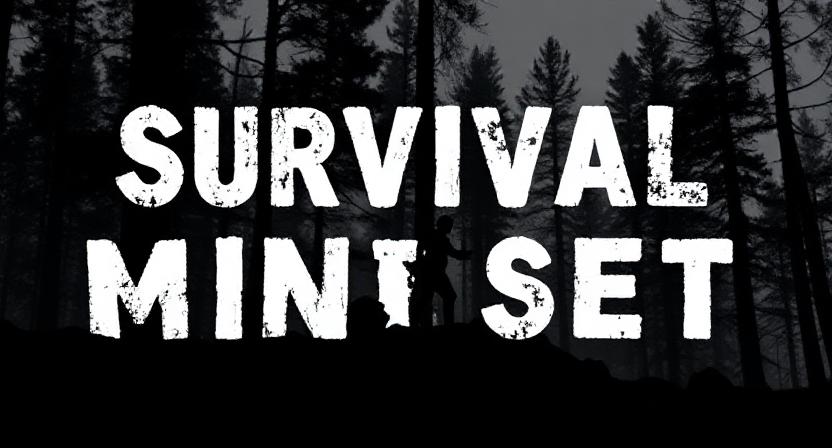
If you’re going to survive with nothing but your wits, you need the right mindset. This isn’t just about staying calm while contemplating how to fashion a hat out of leaves (though that could be stylish). It’s about embracing the challenge.
When I found myself in a similar situation after getting lost during what was supposed to be a “quick” hike (which turned into an epic saga), I realized that panic only makes things worse.
Panicking is about as helpful as trying to start a fire with wet spaghetti. Seriously, it’s just not gonna work. Instead, take a deep breath. Yeah, just breathe. Then, look around like you’re Sherlock Holmes on a wild adventure.
Think about what you’ve got. What resources are nearby? Do you see any berries or nuts? Maybe some wild plants? Check for food. It’s like a scavenger hunt!
Now, about that squirrel. Sure, it looks like a snack. Just kidding! Catching it might be a bit too tricky. But hey, maybe it can help you keep your spirits up. Watch how it moves and acts. Animals can be funny when you’re lost, right?
Once you get a handle on your resources, think about water. Look for streams or ponds. If it’s not safe to drink, maybe you can collect rainwater. Your body will thank you!
Survival is as much in your head as it is in your body. Stay calm. Talk to yourself like you’re coaching a sports team. You can do this! Handle each moment one step at a time. Every decision matters. Trust yourself, and you’ll be okay. Just imagine telling this story later over coffee. It’ll be a good one!
Finding Water: The Elixir of Life
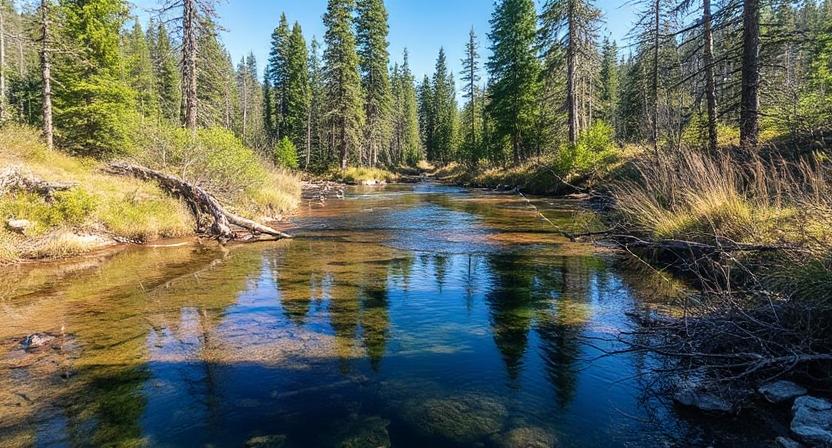
Now let’s get practical—water! You might think finding water in the wild would be easier than spotting Bigfoot at a barbecue. Unfortunately, it’s not always so straightforward. If you’re parched and wondering why you didn’t pack more snacks instead of that extra pair of socks, here are some tips.
If you’re lucky enough to stumble upon streams or rivers, congratulations! You’ve hit the hydration jackpot. Just remember to filter or boil it before drinking unless you enjoy playing Russian roulette with giardia (trust me; it’s not fun).
If you can’t find running water, don’t worry. Look for wildlife. Yup, those little critters can be your guide. Animals need water just like we do, so they usually know where to find it. Follow their tracks, and you might stumble upon a stream or pond.
Feeling a bit brave? Catch some rainwater if you get lucky during a downpour. Grab leaves or anything you can find to collect that precious water. It’s like nature’s little gift. Just remember, the weather can be super unpredictable. One minute it’s sunny, and the next, you’re soaked!
And hey, if rain doesn’t happen? You can try getting moisture from plants early in the morning. When the dew is fresh, plants get all glistening and wet. Just don’t go licking random rocks or anything like that. Yikes! You definitely don’t want to taste dirt or moss.
Take a moment to look around. Nature has its own ways of helping us if we just stay aware. You’ll find something. Just keep your eyes open and your spirit up. Before you know it, you’ll be sipping water and feeling like a champ! It’s all part of the adventure.
Food Foraging: Nature’s Grocery Store
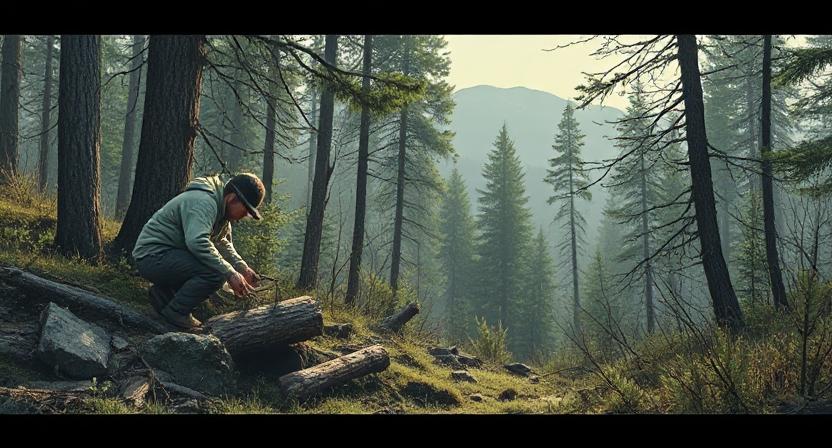
Speaking of survival essentials, let’s chat about food—or rather how not to starve while waiting for rescue teams who may or may not have gotten sidetracked by their own picnic plans. Foraging sounds fancy but really means scavenging like raccoons at midnight.
You’ll want to familiarize yourself with local edible plants before heading out because nobody wants an unplanned trip down Poison Ivy Lane!
Dandelions are like little surprises in your backyard. Those pesky weeds? They’re actually super healthy! You can eat them raw in a salad or cook them up like greens. Who’d guess a weed could be good for you? It’s like finding out your little sister has a hidden talent for singing!
Berries are another tasty option. Just make sure they don’t look like a rainbow exploded in your yard. If they’re bright neon colors or strange shapes, best to leave those alone. Stick to the ones that look familiar. They can be yummy snacks or a sweet addition to foraged meals.
And guess what? Insects are a food source, too. Yep, you heard that right! Crickets are pretty much like nature’s popcorn. You can snack on them just like that. Crunchy and surprisingly filled with protein. Trust me, they’re better than they sound. Just remind yourself they’re packed with nutrients.
It’s a wild world out there. You might find that eating like this can be an adventure. Who needs fancy restaurants when you have nature’s buffet right outside? Just keep an open mind. You never know what delicious surprises await you!
Building Shelter: Home Sweet Home…Sort Of
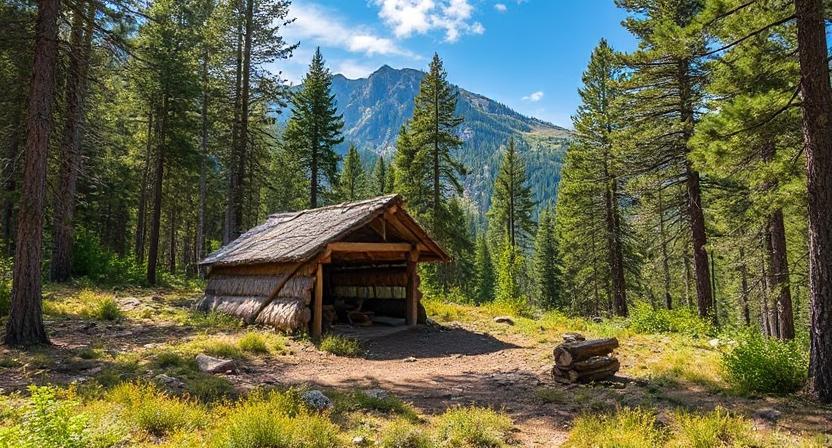
Okay, you’ve found some food and drink. Now it’s time to find a somewhere to stay! If you don’t like sleeping outside and waking up next to raccoons that want to know what you’re doing, building a shelter will keep you safe from the rain and wind, and maybe even from squirrels who want to judge your life choices.
Find massive rocks or trees that have fallen. They make fantastic places to camp. You don’t need any special tools or engineering abilities! Just look for a place that seems right. A warm, safe place to curl up and relax.
Don’t worry if you can’t find those. Sticks and leaves can be used to build a rudimentary shelter. It doesn’t have to be perfect. Like getting a large, green embrace from nature, just enough to keep you dry and shield the wind.
It could seem hard to get everything together at first. But take a deep breath. When you look closely, nature has a lot to offer. You can use big leaves as a roof. Like building a miniature fort, put smaller sticks on top of larger ones. It will be strong enough for you to sleep after a long day of fun.
Look at it as a fun test! Every branch you pick up brings you closer to your warm camp. Also, building your own shelter is like being a kid playing in the woods again. That actually means a lot to me. Let your imagination run wild and enjoy the creativity!
Signaling for Help: Getting Rescued Without a Signal Flare
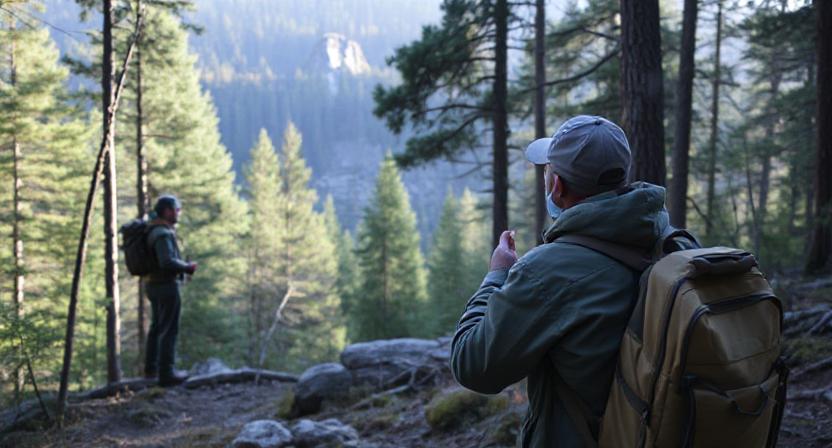
Let’s say you’ve done everything right—you’ve built shelter, found food/water—but now comes the hard part: signaling for help without resorting to smoke signals made from burnt marshmallows (although tempting!).
If you ever find yourself lost, yelling “HELP!” might not work like in the movies. Nature can be loud, right? Birds, wind, maybe even squirrels chattering away. So, if shouting doesn’t do much, let’s think of some other ideas!
Look for shiny things. Mirrors or shiny wrappers from snacks can reflect sunlight. If someone’s up high, they might see that sparkle and come help. So maybe you start thinking twice about that granola bar wrapper!
Making big signs on the ground can be super helpful too. Imagine spelling out “SOS” with rocks. Big letters that stand out! Someone flying overhead might spot it way faster than if you’re just waving your arms.
Think of it like playing treasure hunt but for rescue! You want to catch someone’s attention with your creativity. It makes you feel empowered, doesn’t it? Just remember to keep a smile as you work. You’re not just waiting; you’re making your own “HELP” signal!
Conclusion: Embrace Your Inner Survivor
I truly hope you’re starting to see that being outside can be a joyful adventure, even when things get hard. Just give it some thought. You might get an insect bite or fall over a root like you’re in a cartoon once in a while. But that’s just how people are, right?
Picture yourself strolling through a forest that feels like walking through a patch of broccoli. Doesn’t it sound funny? We don’t have to worry; we can just laugh! We might be able to turn it into a game. Who can find the tree that makes them laugh the most? Let your mind run wild!
Problems can come up, but they’re simply small bumps in the path. Don’t forget that we can transform any hard time into a great story if we use our brains and our creativity. With a little humor, we can handle anything. Imagine telling your pals about the time you were lost and constructed a huge “SOS” sign out of sticks. It will be a fun memory.
Let’s celebrate our inner survivor spirit the next time life throws you a curveball or you find yourself in a humorous position in the woods. We can do this! Stay positive and be ready for anything.
Featured Snippet: Wilderness survival begins with a calm mindset, basic problem-solving, and the ability to use natural resources. By finding water, building shelter, foraging food, and signaling for help, anyone can stay safe and increase their chances of rescue. Preparation, awareness, and creativity are essential in any outdoor emergency.
Frequently Asked Questions
What is the first thing to do if I get lost in the wilderness?
The first step is to stay calm, assess your surroundings, and identify immediate priorities like shelter and water.
How do I find safe drinking water in the wild?
Look for streams, rivers, or rainwater and purify it by boiling or filtering before drinking.
What can I eat if I run out of food outdoors?
You can safely forage edible plants, berries, nuts, and insects if you know how to identify them.
How can I build a simple survival shelter?
Use branches, leaves, and natural materials to create a lean-to or debris shelter for warmth and protection.
What are effective ways to signal for help?
Create large ground symbols like SOS, use reflective objects, or make loud repeated noises to attract rescuers.
How do I stay mentally strong in a survival situation?
Maintain a positive mindset, stay focused on small tasks, and avoid panic to make better decisions.
Why is humor mentioned as a survival tool in the article?
Humor reduces stress, boosts morale, and helps maintain emotional resilience during difficult situations.
Suggested Resources:
Wilderness First Aid Basics
https://www.redcross.org/get-help/how-to-prepare-for-emergencies/wilderness-first-aid.html
How To Build a Shelter in The Wilderness
https://www.outdoorlife.com/story/survival/build-shelter-in-wilderness/
Edible Wild Plants
https://www.wildedibles.com/

Kevin Collier is a seasoned outdoor enthusiast and writer for Trekbug.com, specializing in outdoor adventures, survival strategies, and prepping insights. With a deep love for nature and a commitment to self-sufficiency, Kevin empowers readers to embrace the wilderness confidently. He shares valuable tips, practical techniques, and inspiring stories, helping both novice and experienced adventurers develop essential skills for surviving and thriving in the great outdoors.





